Flowers have been an integral part of human culture since time immemorial. They are used to convey emotions, as decorations, in religious ceremonies, and as a source of inspiration in art and literature. Greek mythology is no exception when it comes to flowers. From delicate blossoms to fragrant blooms, flowers feature prominently in many Greek myths and stories. In this article, we will explore ten of the most common flowers in Greek mythology and their symbolic meanings.
Top 10 Flowers in Greek Mythology
Iris
The iris flower is not only named after the goddess Iris but also shares many of her qualities. In Greek mythology, Iris was known for her swift and graceful movements, and the iris flower’s delicate petals and slender stem embody this elegance. Additionally, Iris was revered for her ability to bridge the gap between the heavens and the mortal world, and the iris flower is said to represent this connection. The flower’s vibrant hues, ranging from deep blues and purples to soft pastels, are reminiscent of the colors of the rainbow, which Iris was responsible for creating.
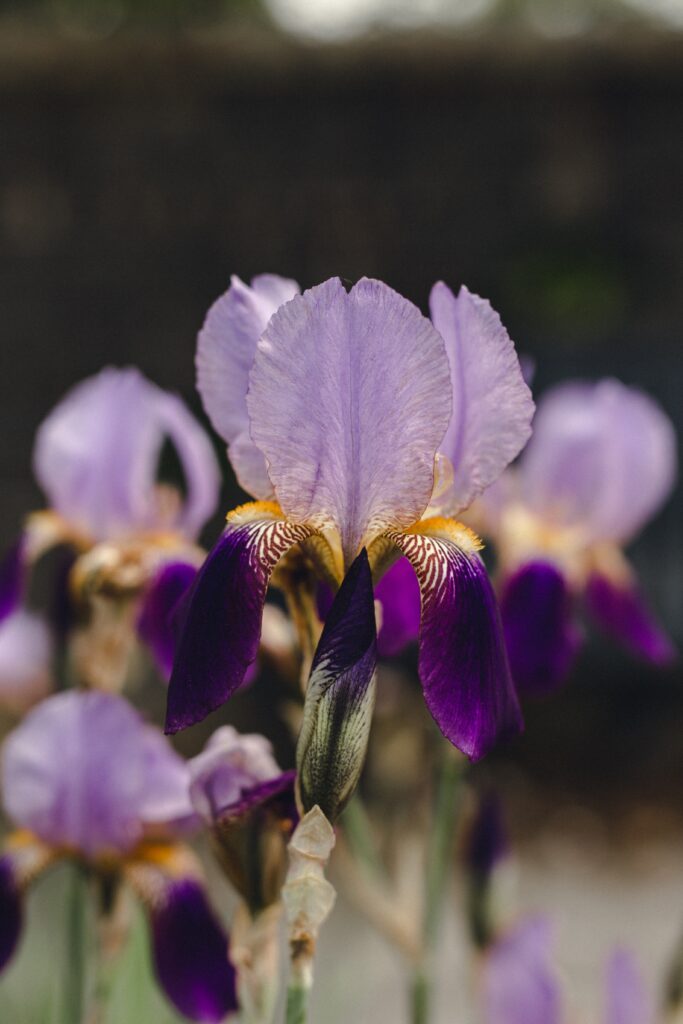
The iris flower’s symbolic meaning goes beyond its association with the goddess Iris. It is also considered a symbol of courage and wisdom. The flower’s sword-like leaves are thought to represent strength and courage, while its intricate petals symbolize wisdom and knowledge. The iris flower’s bold and striking appearance makes it a popular choice for gardens and floral arrangements, where it can add a touch of regal elegance and sophistication.
In addition to its symbolic meaning, the iris flower also has practical uses. It is often used in herbal remedies for its medicinal properties, which are said to include pain relief, anti-inflammatory effects, and antibacterial properties. The root of the iris plant is also used in the production of perfumes and cosmetics.
Overall, the iris flower’s association with the goddess Iris, its connection to the heavens, and its symbolism of courage and wisdom make it a fascinating and multifaceted flower with a rich history and meaning. Whether used in mythology, herbal remedies, or as a decorative element, the iris flower is a true symbol of beauty and strength.
Narcissus
The story of Narcissus and the narcissus flower is one of the most well-known myths in Greek mythology. Narcissus was a beautiful young man who was admired by many, but he was also known for his extreme vanity and self-love. One day, while walking through the woods, Narcissus came across a pool of water and saw his reflection for the first time. He was so enamored with his own beauty that he could not tear himself away from the water’s edge. Eventually, Narcissus wasted away and transformed into the narcissus flower, which is said to have sprung from the spot where he died.
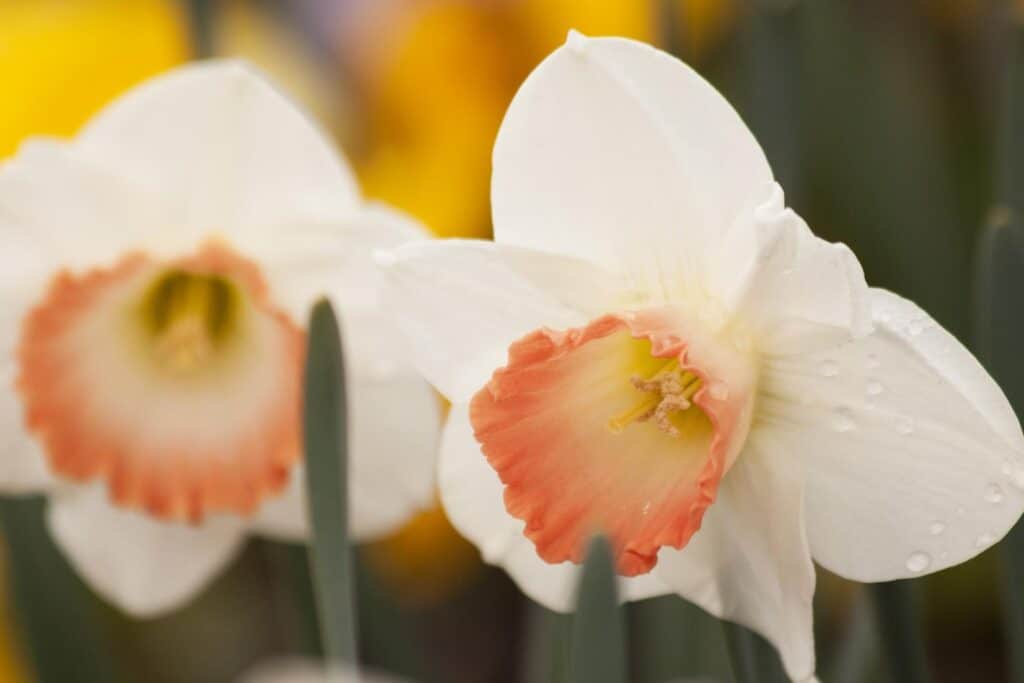 The narcissus flower’s association with vanity and self-love can be seen in its appearance. The flower has a trumpet-shaped center that is surrounded by delicate petals, much like Narcissus’s own beauty was at the center of his world. The flower’s bright yellow color is also symbolic of the sun, which was another source of Narcissus’s admiration.
The narcissus flower’s association with vanity and self-love can be seen in its appearance. The flower has a trumpet-shaped center that is surrounded by delicate petals, much like Narcissus’s own beauty was at the center of his world. The flower’s bright yellow color is also symbolic of the sun, which was another source of Narcissus’s admiration.
Despite its association with vanity, the narcissus flower has also been used in a variety of practical applications throughout history. In ancient times, the bulbs of the narcissus plant were used for medicinal purposes, including as a pain reliever and a treatment for respiratory ailments. The flower’s essential oil is also used in perfumes and cosmetics.
In addition to its practical uses, the narcissus flower has also played a significant role in literature and art throughout history. The myth of Narcissus has been depicted in countless works of art, including paintings, sculptures, and literature. The flower’s striking appearance and unique symbolism have also made it a popular choice for floral arrangements, where it can add a touch of beauty and elegance.
Overall, the narcissus flower’s association with Narcissus and its symbolism of vanity and self-love make it a fascinating and complex flower with a rich history and meaning. Whether used in mythology, medicine, or as a decorative element, the narcissus flower is a true symbol of beauty and self-admiration.
Hyacinth
In Greek mythology, the story of Hyacinth is a tragic one. Hyacinth was a beautiful young man, loved by both the god Apollo and the West Wind, Zephyrus. One day, as Apollo and Hyacinth were playing a game of discus, Apollo accidentally threw the discus too far and it struck Hyacinth in the head, killing him instantly. From Hyacinth’s blood, a flower sprouted, which became known as the hyacinth flower.
The hyacinth flower’s association with mourning and the fragility of life can be seen in its delicate appearance and its significance in funerary practices. The flower’s petals are soft and fragrant, but they also wilt quickly, making them a symbol of the fleeting nature of life. In ancient Greece, the hyacinth flower was often used in funerary rites and was placed on graves as a symbol of mourning and remembrance.
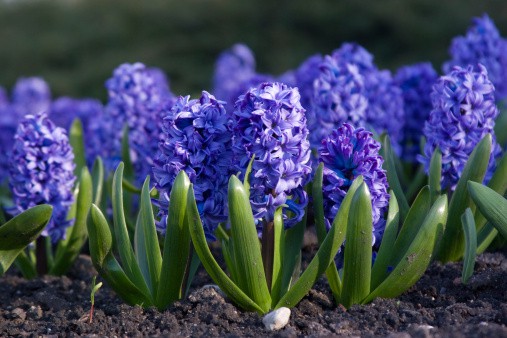
Beyond its symbolic meaning, the hyacinth flower also has practical uses. The flower’s essential oil is used in perfumes and cosmetics, while the plant itself is used in herbal remedies for its antispasmodic and expectorant properties. The flower’s striking appearance and unique symbolism have also made it a popular choice for floral arrangements, where it can add a touch of elegance and beauty.
The story of Hyacinth and the hyacinth flower has also played a significant role in literature and art throughout history. The myth has been depicted in countless works of art, including paintings, sculptures, and literature, and the flower’s unique symbolism has been explored in depth by poets and writers.
Overall, the hyacinth flower’s association with Hyacinth and its symbolism of mourning and the fragility of life make it a fascinating and complex flower with a rich history and meaning. Whether used in funerary rites, medicine, or as a decorative element, the hyacinth flower is a true symbol of beauty and remembrance.
Anemone
The anemone flower is a symbol of both beauty and mortality. In Greek mythology, the flower was said to have grown from the blood of Adonis, a handsome young man who was loved by the goddess Aphrodite. When Adonis was killed by a boar, Aphrodite was said to have wept tears of blood that fell to the ground and gave rise to the anemone flower.
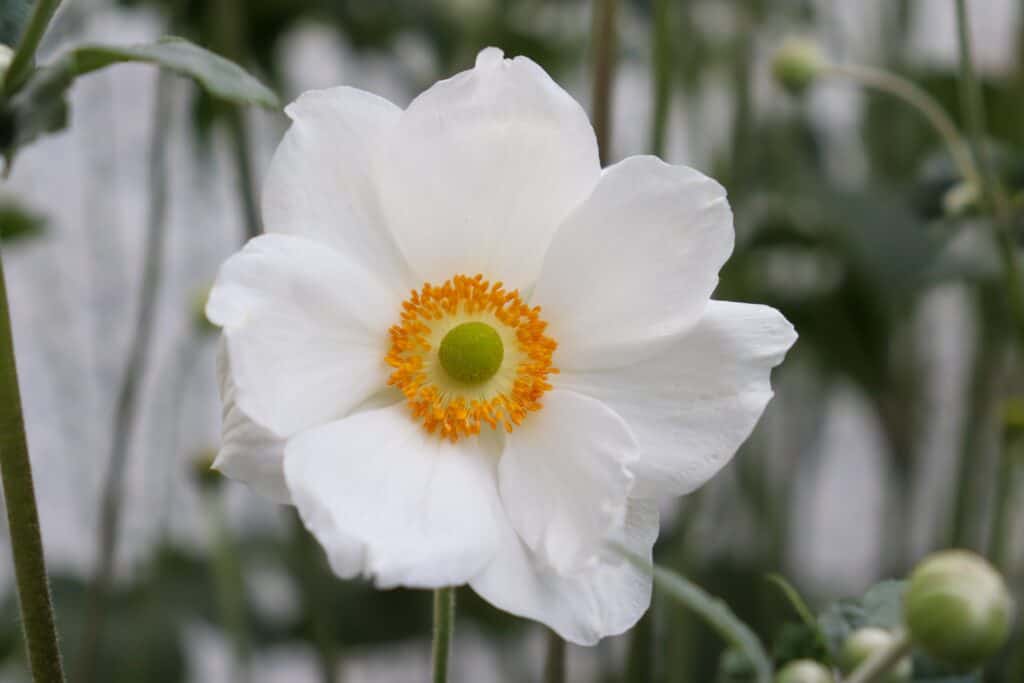 The anemone is known for its delicate petals and vibrant colors, which make it a popular choice for gardens and floral arrangements. However, the flower’s beauty is short-lived, as its petals quickly fall off and wither away. This impermanence is seen as a reminder of the transience of life and the inevitability of death.
The anemone is known for its delicate petals and vibrant colors, which make it a popular choice for gardens and floral arrangements. However, the flower’s beauty is short-lived, as its petals quickly fall off and wither away. This impermanence is seen as a reminder of the transience of life and the inevitability of death.
Despite its association with mortality, the anemone is also a symbol of rebirth and renewal. It typically blooms in the spring, just as nature begins to awaken from its winter slumber. This association with the arrival of spring makes the anemone a popular choice for Easter and other springtime celebrations.
In addition to its symbolism in Greek mythology, the anemone has also played a role in other cultures and traditions. In some parts of the world, the flower is associated with luck and protection, while in others it is seen as a symbol of love and romance. Whether used for decoration or imbued with deeper meaning, the anemone remains a fascinating and versatile flower with a rich history and enduring significance.
Poppy
In Greek mythology, the goddess Demeter played an important role as the goddess of agriculture and harvest. She was also the mother of Persephone, who was kidnapped by Hades, the god of the underworld. In her grief and despair, Demeter wept and wandered the earth in search of her daughter. According to myth, the poppy flower grew where Demeter’s tears had fallen, serving as a symbol of the goddess’s sorrow and the cyclical nature of life and death.
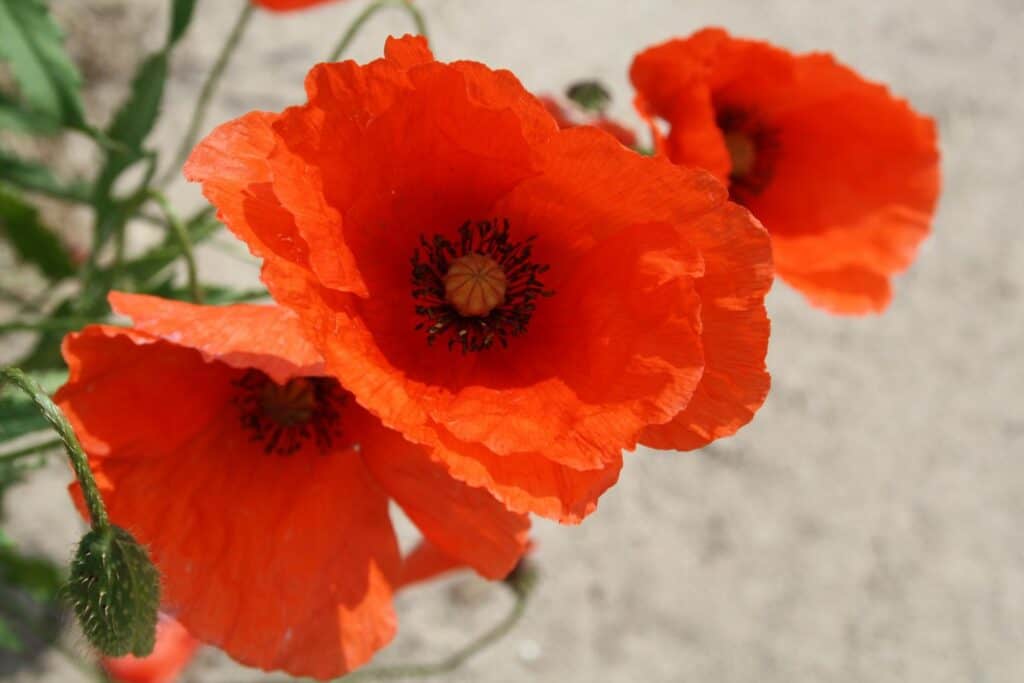 The poppy flower’s association with sleep and death can be traced to its medicinal properties. The plant’s sap contains opium, a powerful narcotic that has been used for centuries as a painkiller and sedative. The poppy flower’s use in medicine has also made it a symbol of healing, with the ancient Greeks and Romans using it in a variety of remedies for various ailments.
The poppy flower’s association with sleep and death can be traced to its medicinal properties. The plant’s sap contains opium, a powerful narcotic that has been used for centuries as a painkiller and sedative. The poppy flower’s use in medicine has also made it a symbol of healing, with the ancient Greeks and Romans using it in a variety of remedies for various ailments.
Beyond its medicinal properties, the poppy flower has played a significant role in literature and art throughout history. The poppy’s striking red color and delicate appearance have made it a popular subject for artists, while its symbolism of sleep and death have made it a popular theme in literature and poetry. In particular, the poppy flower has been associated with war and remembrance, with the red poppy becoming a symbol of the sacrifices made by soldiers during World War I.
Overall, the poppy flower’s association with Demeter and its symbolism of sleep and death make it a fascinating and complex flower with a rich history and meaning. Whether used in medicine, art, or as a symbol of remembrance, the poppy flower is a true representation of the cyclical nature of life and death.
Laurel
In Greek mythology, the god Apollo played an important role as the god of the sun, music, poetry, prophecy, and archery. He was also associated with victory and achievement, which is why the laurel flower became an important symbol for him.
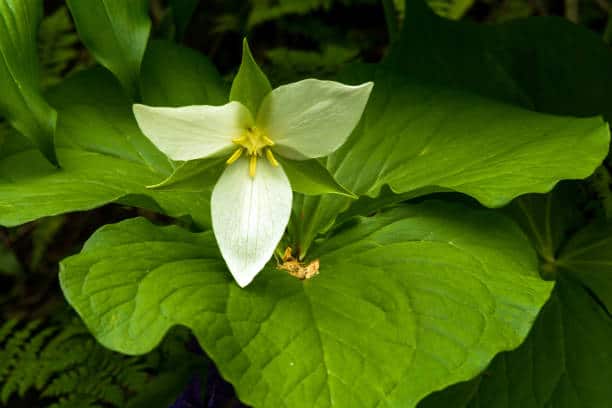
The laurel flower is closely associated with the myth of Apollo’s victory over the serpent Python. According to the myth, Python was a monstrous serpent who guarded the oracle of Delphi. Apollo defeated Python with his bow and arrow, and as a reward for his victory, he was gifted with a laurel tree by the god of the river, Peneus. From then on, the laurel became a symbol of Apollo’s victory and achievement.
The laurel flower is also associated with the story of Daphne, a nymph who was pursued by Apollo but rejected his advances. To escape him, Daphne prayed to the gods to transform her into a tree. Her wish was granted, and she was transformed into a laurel tree. In this myth, the laurel tree becomes a symbol of chastity and purity.
Beyond its symbolic associations, the laurel flower has practical uses. The leaves of the laurel tree are used in cooking as a flavoring agent, and the tree itself has been used in traditional medicine for its antiseptic and astringent properties.
Throughout history, the laurel flower has also played a significant role in art and literature. The laurel wreath, made of laurel leaves, was a common symbol of victory and achievement in ancient Greece and Rome, and was often worn by athletes and scholars. In poetry and literature, the laurel flower has been used to represent victory, achievement, and honor.
Overall, the laurel flower’s association with Apollo and its symbolism of victory and achievement make it a fascinating and complex flower with a rich history and meaning. Whether used in art, literature, or as a symbol of honor, the laurel flower remains an enduring symbol of victory and achievement.
Lily
The goddess Hera played a significant role as the queen of the gods and the goddess of marriage, childbirth, and family. As such, she was associated with the themes of purity and motherhood, which are also represented by the lily flower.
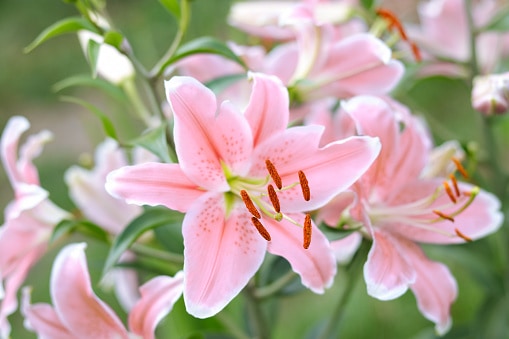
The lily flower is said to have grown from the milk of Hera, which had spilled while she was nursing Heracles, the demigod son of Zeus and a mortal woman. The lily’s association with Hera can also be traced to its purity and beauty, which were attributes that the goddess herself was believed to embody.
In addition to its association with Hera, the lily flower has also played a significant role in Christianity. The lily is often used in depictions of the Virgin Mary, who is seen as the epitome of purity and motherhood in Christian iconography. In this context, the lily symbolizes the purity of the Virgin Mary and her role as the mother of Jesus Christ.
Beyond its symbolic associations, the lily flower has practical uses as well. Different parts of the lily plant have been used in traditional medicine for various ailments, including digestive problems, headaches, and skin irritations.
Throughout history, the lily flower has also been a popular subject for artists and has been used in a variety of art forms, including painting, sculpture, and literature. In art, the lily is often used to represent purity, beauty, and grace.
Overall, the lily flower’s association with Hera and its symbolism of purity and motherhood make it a fascinating and complex flower with a rich history and meaning. Whether used in religion, art, or traditional medicine, the lily flower remains an enduring symbol of beauty, grace, and purity.
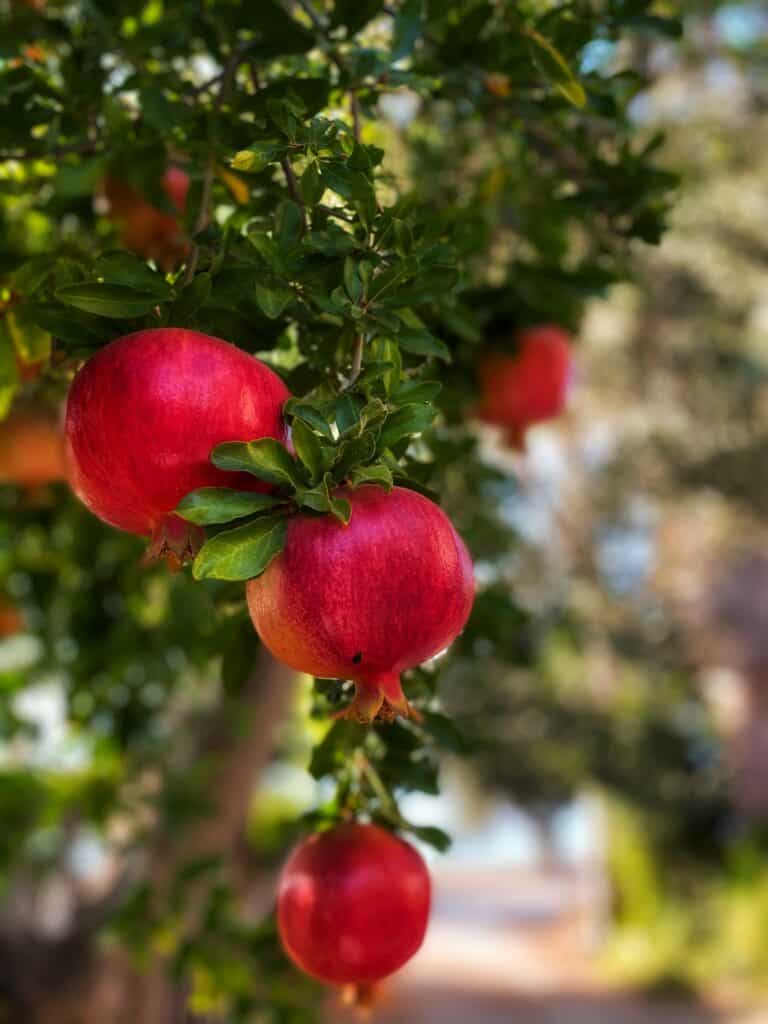 The pomegranate is a fruit that has played a significant role in Greek mythology, particularly in relation to the goddess Persephone. According to legend, Persephone was the daughter of the goddess Demeter, and she was kidnapped by Hades, the god of the underworld. As a result, Persephone was forced to spend half of each year in the underworld, and the other half on earth with her mother.
The pomegranate is a fruit that has played a significant role in Greek mythology, particularly in relation to the goddess Persephone. According to legend, Persephone was the daughter of the goddess Demeter, and she was kidnapped by Hades, the god of the underworld. As a result, Persephone was forced to spend half of each year in the underworld, and the other half on earth with her mother.
During her time in the underworld, Persephone ate six pomegranate seeds, which bound her to the underworld and ensured her return each year. This is why, in Greek mythology, the pomegranate is often associated with fertility, rebirth, and the afterlife.
The pomegranate’s association with Persephone is significant in many ways. For one, it represents the cyclical nature of life and death, and the idea that life can emerge from death. It also represents the idea of rebirth, as Persephone is reborn each spring when she returns to the earth from the underworld.
In addition to its mythological significance, the pomegranate has also been used in traditional medicine for its many health benefits. Pomegranate juice, for example, is believed to have antioxidant properties that can help protect the body against diseases such as cancer, heart disease, and Alzheimer’s disease.
Overall, the pomegranate is a fascinating and complex fruit with a rich history and meaning in Greek mythology. Its association with Persephone, fertility, rebirth, and the afterlife make it a powerful symbol of life and death, and its many health benefits have made it a valuable resource in traditional medicine.
Rose
The rose flower has long been associated with the goddess Aphrodite, the goddess of love and beauty in Greek mythology. According to legend, the rose was said to have grown from the blood of Aphrodite’s lover, Adonis, who was killed by a wild boar. As Adonis lay dying, Aphrodite rushed to his side and pricked her foot on the thorns of a nearby rose bush. Her blood mingled with Adonis’s and from that spot, a beautiful red rose bloomed.
 From that day on, the rose became a symbol of love, passion, and beauty. In ancient Greece, the rose was often used in religious ceremonies and was seen as a gift from the gods. The rose’s association with Aphrodite was also significant, as it reinforced the connection between love and beauty, two qualities that were central to the goddess’s character.
From that day on, the rose became a symbol of love, passion, and beauty. In ancient Greece, the rose was often used in religious ceremonies and was seen as a gift from the gods. The rose’s association with Aphrodite was also significant, as it reinforced the connection between love and beauty, two qualities that were central to the goddess’s character.
In addition to its symbolic significance, the rose has also been used in traditional medicine for its many health benefits. Rose petals, for example, are believed to have anti-inflammatory properties that can help reduce pain and swelling. Rose oil is also used in aromatherapy to promote relaxation and reduce stress.
Overall, the rose flower is a powerful symbol of love and beauty, and its association with the goddess Aphrodite has only added to its significance. Whether given as a gift or used in religious ceremonies, the rose remains one of the most beloved and iconic flowers in Greek mythology.
Sunflower
The sunflower, with its tall stalks and vibrant petals, is a beautiful and iconic flower that has been associated with the Greek god Apollo, the god of the sun and music. In Greek mythology, the sunflower is said to have originated from a nymph named Clytie who was deeply in love with Apollo. Clytie would watch Apollo from dawn until dusk, gazing at his radiant light and listening to his beautiful music. However, Apollo did not return her affections, and in her heartbreak, Clytie slowly turned into a sunflower.
 According to the myth, Clytie continued to gaze up at Apollo every day as he rode his chariot across the sky, moving from east to west. Her devotion was so intense that her face would turn towards the sun, following its movements throughout the day. From that day on, the sunflower has been known as a symbol of adoration, loyalty, and unrequited love.
According to the myth, Clytie continued to gaze up at Apollo every day as he rode his chariot across the sky, moving from east to west. Her devotion was so intense that her face would turn towards the sun, following its movements throughout the day. From that day on, the sunflower has been known as a symbol of adoration, loyalty, and unrequited love.
Today, sunflowers are often given as gifts to express feelings of admiration, loyalty, and devotion. The vibrant petals and warm colors of the sunflower are also a symbol of positivity, happiness, and energy. Sunflowers are commonly used in floral arrangements, and their seeds are a popular snack, as well as a source of oil for cooking and other purposes.
In addition to their symbolic meanings, sunflowers also have many practical uses. They are known for their ability to attract pollinators, and their seeds are a valuable source of nutrition for many animals, including birds and squirrels. Sunflower oil is used in a variety of culinary applications, and is also a popular ingredient in skincare products due to its moisturizing and nourishing properties.
Overall, the sunflower is a beautiful and iconic flower with a rich history in Greek mythology. Its association with the god Apollo and the story of Clytie’s unrequited love make it a symbol of adoration, loyalty, and devotion. The vibrant colors and energy of the sunflower make it a popular choice for decoration and gift-giving, while its many practical uses have made it an important crop throughout history.
Flowers played a significant role in Greek mythology, representing various emotions and concepts. The ten flowers mentioned above are just a few examples of the symbolism and meaning that flowers.
What we love from Amazon this week
Buy these wonderful flowers directly from Amazon:















